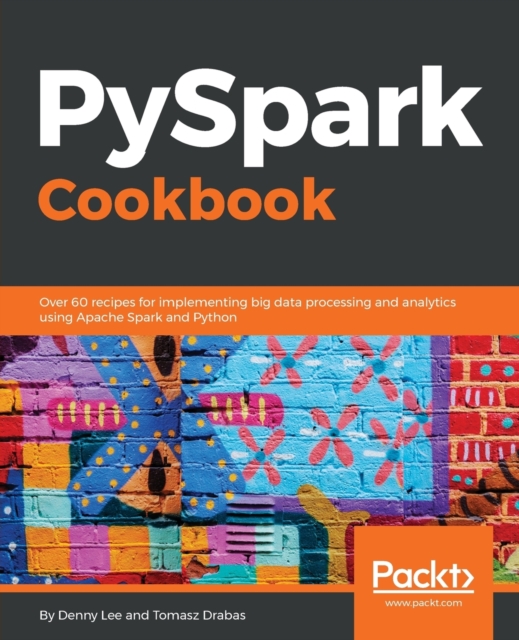
PySpark Cookbook Electronic book text
by Denny Lee, Tomasz Drabas
Electronic book text
Description
Combine the power of Apache Spark and Python to build effective big data applicationsAbout This Book* Perform effective data processing, machine learning, and analytics using PySpark* Overcome challenges in developing and deploying Spark solutions using Python* Explore recipes for efficiently combining Python and Apache Spark to process dataWho This Book Is ForThe PySpark Cookbook is for you if you are a Python developer looking for hands-on recipes for using the Apache Spark 2.x ecosystem in the best possible way.
A thorough understanding of Python (and some familiarity with Spark) will help you get the best out of the book. What You Will Learn* Configure a local instance of PySpark in a virtual environment * Install and configure Jupyter in local and multi-node environments* Create DataFrames from JSON and a dictionary using pyspark.sql* Explore regression and clustering models available in the ML module* Use DataFrames to transform data used for modeling* Connect to PubNub and perform aggregations on streamsIn DetailApache Spark is an open source framework for efficient cluster computing with a strong interface for data parallelism and fault tolerance.
The PySpark Cookbook presents effective and time-saving recipes for leveraging the power of Python and putting it to use in the Spark ecosystem. You'll start by learning the Apache Spark architecture and how to set up a Python environment for Spark.
You'll then get familiar with the modules available in PySpark and start using them effortlessly.
In addition to this, you'll discover how to abstract data with RDDs and DataFrames, and understand the streaming capabilities of PySpark.
You'll then move on to using ML and MLlib in order to solve any problems related to the machine learning capabilities of PySpark and use GraphFrames to solve graph-processing problems.
Finally, you will explore how to deploy your applications to the cloud using the spark-submit command. By the end of this book, you will be able to use the Python API for Apache Spark to solve any problems associated with building data-intensive applications. Style and approachThis book is a rich collection of recipes that will come in handy when you are working with PySparkAddressing your common and not-so-common pain points, this is a book that you must have on the shelf.
Information
-
Item not Available
- Format:Electronic book text
- Pages:330 pages
- Publisher:Packt Publishing Limited
- Publication Date:02/04/2023
- Category:
- ISBN:9781788835367
Information
-
Item not Available
- Format:Electronic book text
- Pages:330 pages
- Publisher:Packt Publishing Limited
- Publication Date:02/04/2023
- Category:
- ISBN:9781788835367






